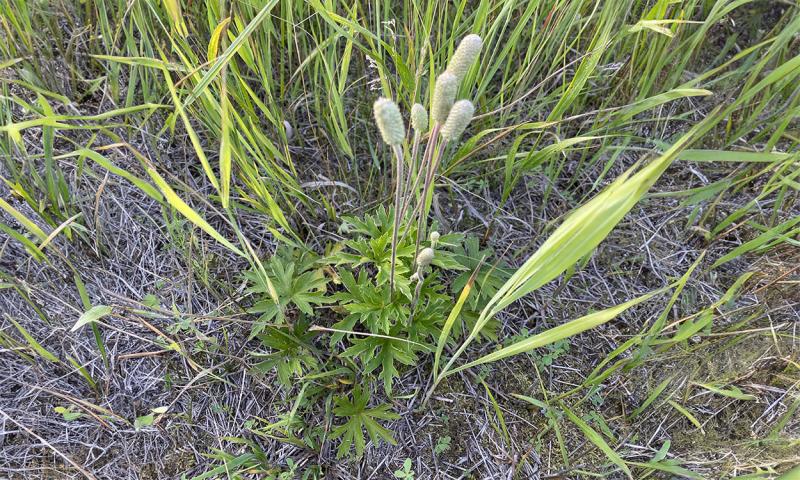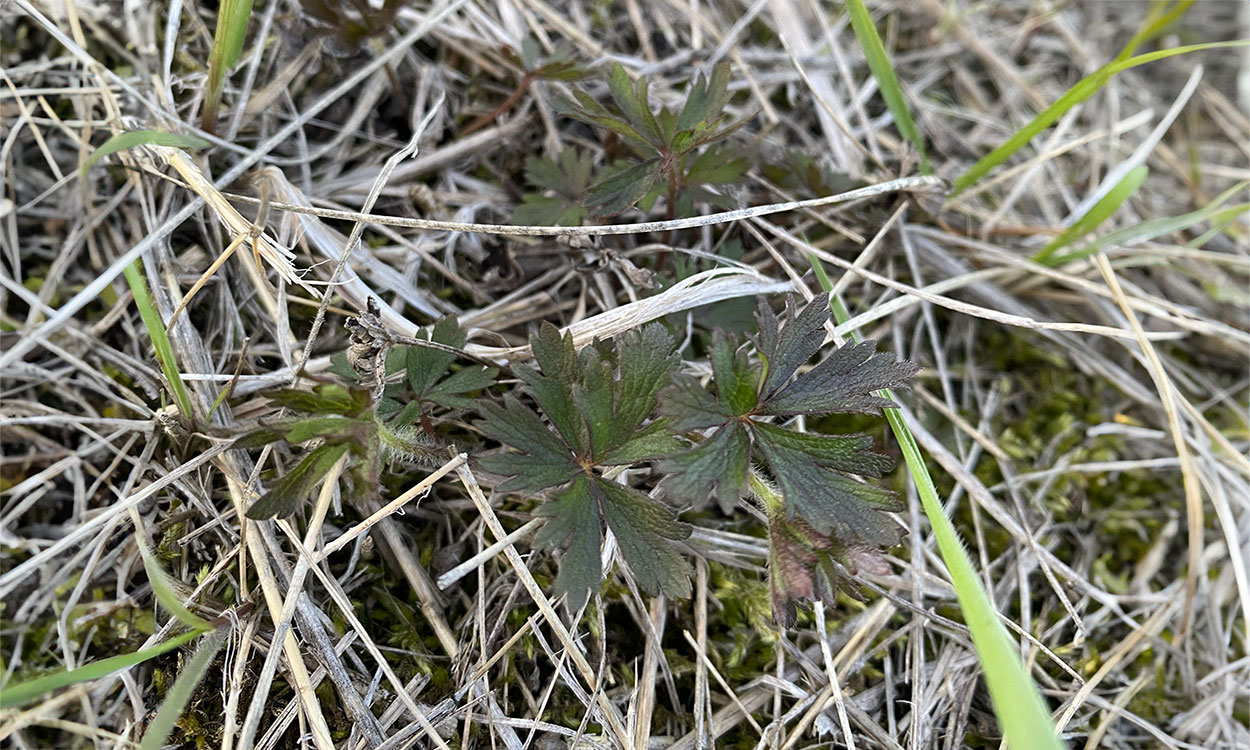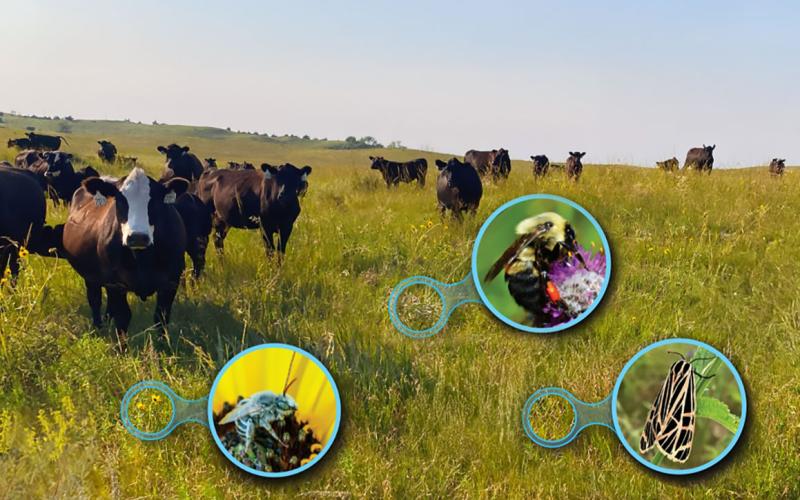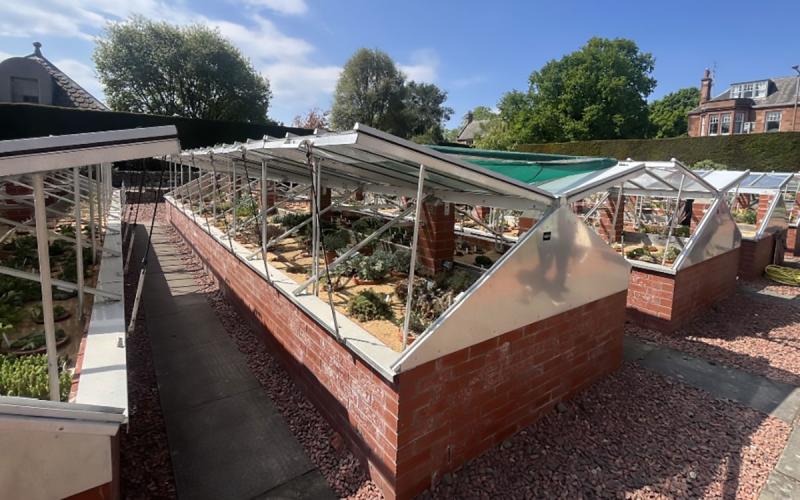Written by Eric Puetz, Research Associate with the Native Plant Initiative, under the direction and review of Lora Perkins, Associate Professor, in the Native Plant Initiative and the SDSU Department of Natural Resource Management; Robin Buterbaugh, Kristine Lang, and Amanda Bachmann.

Anemone cylindrica (Ranunculaceae), also known by the common names of thimbleweed or candle anemone, is a perennial, herbaceous plant (which means it has a non-woody stem) that is native to the prairies and woodland areas of central and northern North America (Figure 1).
Plant Profile
This species has one-to-two-feet-tall erect stems and a basal clump of palm-like leaflets that radiate from a single point (Figure 2). The white flowers mature to form a cylindrical seedhead that resembles a sewing thimble.
Anemone cylindrica’s flowers contain no true petals but are surrounded by four to five white sepals. This species blooms from mid to late summer and when mature, it produces a seed head filled with tightly packed achenes (single seeded fruits) less than half an inch wide with long, cottony hairs. This plant grows in full to partial sun. Following fertilization of the flowers, the tightly packed seed heads resemble a thimble, but gradually loosen in the fall, appearing soft, cottony or even woolly (Figure 3). Seed is not easily dispersed, and the thimble-like seed heads slowly loosen as the seasons change from fall into winter.
Leaves

Seed Head

This species is known to be primarily self-pollinated, which means pollen from the same plant fertilizes the individual. This species produces approximately 200 achenes per seed head. Seed dispersal is thought to occur via wind and weather events, and the cottony/woolly structures aid in localized seed dispersal.
In Your Garden
This species thrives, despite poor soil, and it provides a unique addition to gardens with full to partial sun. If you’re looking to add texture to your landscape, consider adding thimbleweed!
About the Native Plant Initiative
Native plants are the foundation that supports insects, pollinators (including bees), birds and wildlife.
Learn More

